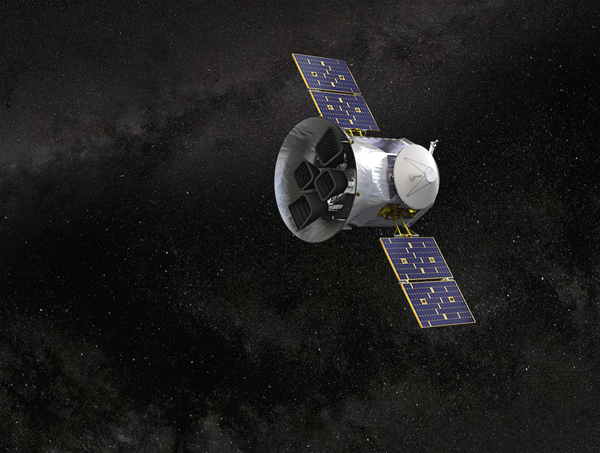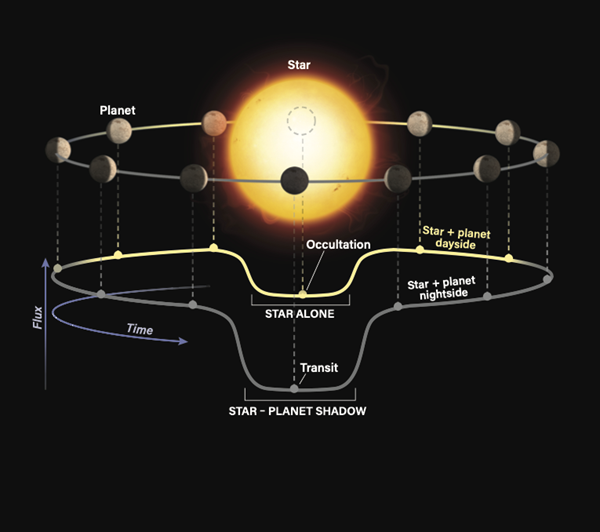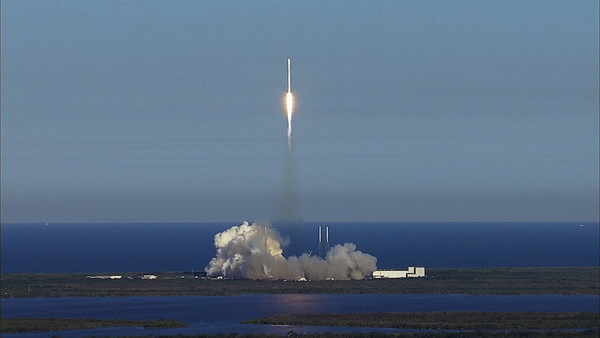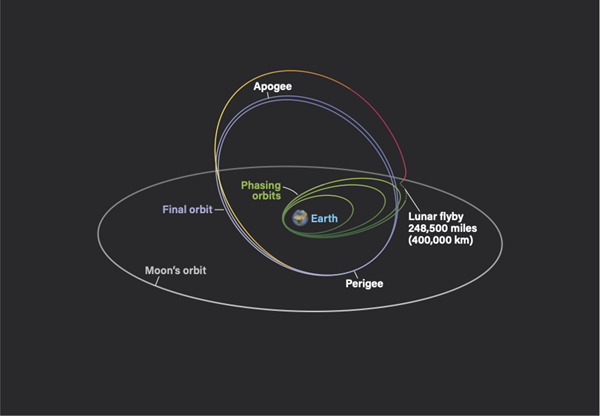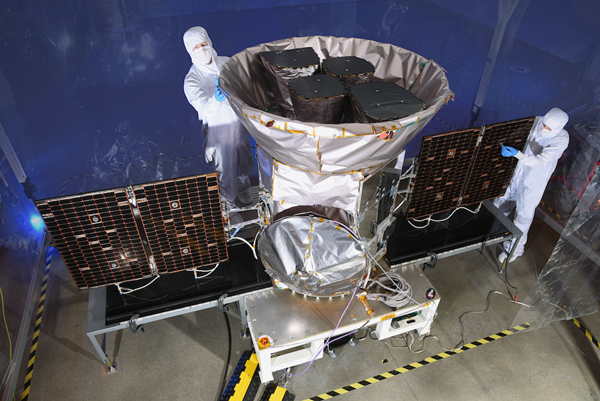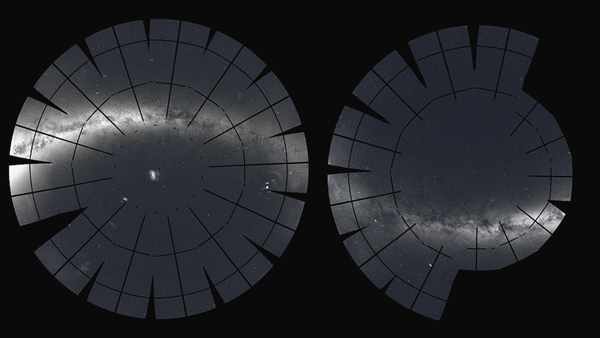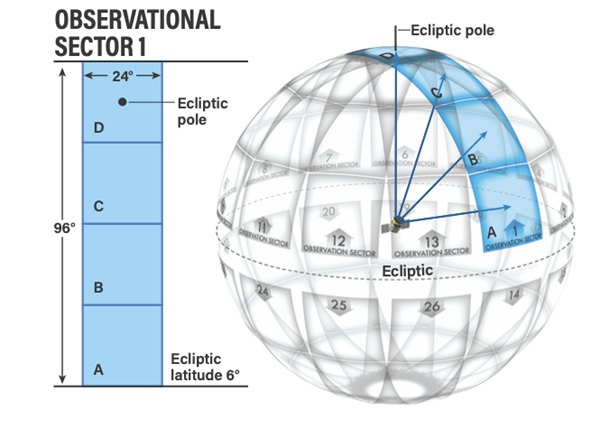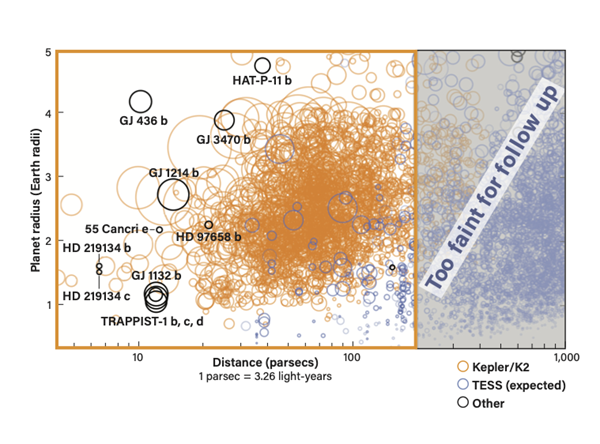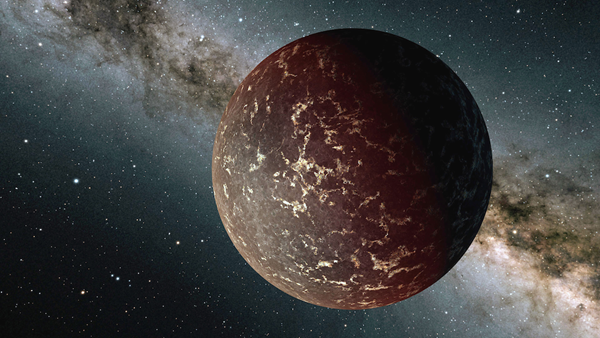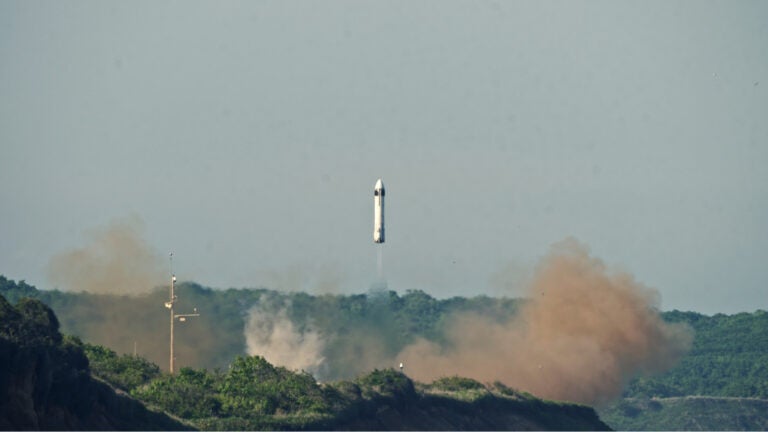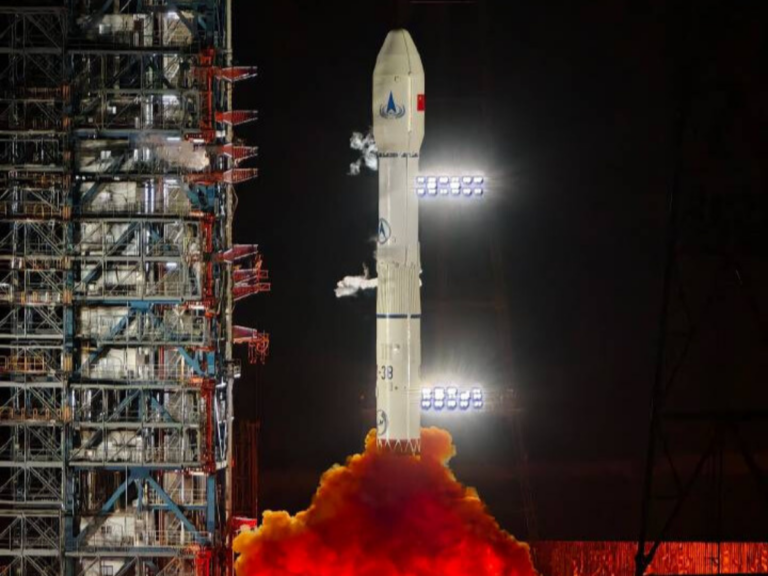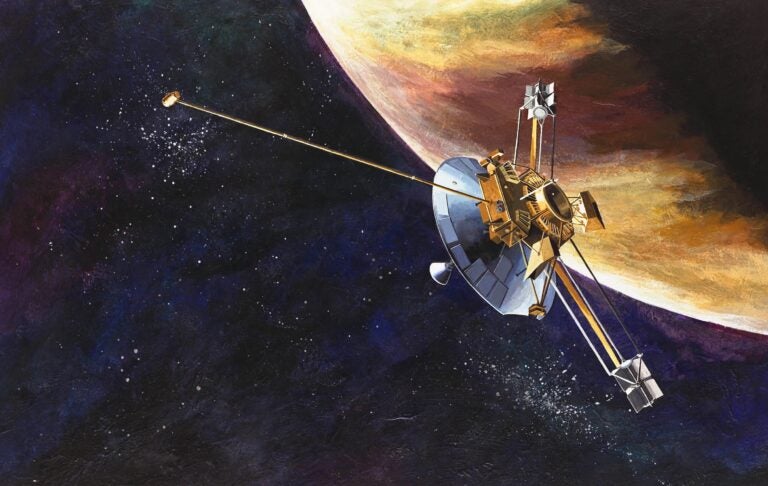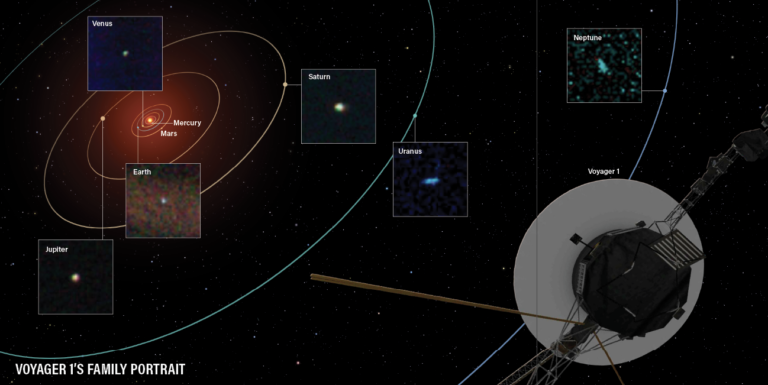We knew that our MIT-built star trackers were capable of detecting changes of as little as 0.1 percent in a star’s brightness. This level of precision would allow us to spot transits of close-in Jupiter-sized planets — so-called hot Jupiters — orbiting solar-type stars. So, in 2005, we proposed to NASA that HETE-2 be assigned a new task and a new name. Rechristened the Hot Exoplanet Transit Experiment-Survey (HETE-S), it would carry out a nearly all-sky survey for transiting hot Jupiters at low cost (approximately $2 million per year) for five years. Unfortunately, NASA declined our proposal, noting that the considerably more capable Kepler Space Telescope — a much larger, $600 million mission dedicated to finding exoplanets by watching them transit their host stars — would soon launch.
So, HETE-S never came to be. But from its conception was born the Transiting Exoplanet Survey Satellite (TESS). This mission is the result of more than a decade-long effort, with the primary goal of discovering transiting exoplanets in our solar neighborhood that are ripe for follow-up with the next generation of telescopes.
TESS is born
Although NASA rejected our proposal for HETE-S, we realized that a small satellite based upon HETE-2 and equipped with newer cameras could come in at a low enough cost for private funding. This new satellite, which we referred to as TESS-P (P for private), could carry out a shallow wide-field survey of the entire sky, complementing Kepler’s 100-square-degree deep narrow-field search by covering a field 400 times greater.
During 2006 and 2007, the Kavli Foundation, the Smithsonian Astrophysical Observatory, Google, and a group of MIT departmental and private donors sought funding for TESS. Unfortunately, the Great Recession intervened and the majority of our prospective donors could no longer fund our plan.
We immediately began planning for the next NASA solicitation, for which proposals were due in 2011. Yet again, NASA selected TESS for a year-long Phase A study, this time as a Medium-Class Explorer (MIDEX) mission. We were met with success: TESS was selected and funded as the MIDEX winner in April 2013!
Getting a good view
TESS entered development in 2014 with the primary science goal of searching the entire sky for the best 1,000 small exoplanets within 200 light-years — i.e., the solar neighborhood. “Best” in this case means exoplanets with measurable masses, as well as atmospheres that can be studied with the upcoming James Webb Space Telescope (JWST). Essentially, TESS would be a finder scope for Webb, scouting for Earth-sized exoplanets orbiting the brightest Sun-like and smaller M-dwarf stars within about 200 light-years of our solar system. TESS would also serve as a bridge from the (now-defunct) Kepler mission to Webb, as well as other large exoplanet imaging space missions with launch dates in the 2030s and beyond.
Orbits very distant from Earth — like Kepler’s 6.2 million-mile (10 million kilometers) heliocentric orbit or JWST’s planned 900,000-mile (1.5 million km) orbit around the Earth-Sun Lagrange 2 point — seemed desirable. But communicating from those distances would exceed any reasonable budget of antenna time a small mission could expect from NASA’s Deep Space Network.
The solution turned out to be a new kind of elliptical orbit, in which the satellite spends part of its time close to Earth for data downlink but most of its time at a distance comparable to the Moon’s distance from Earth. Generally, such orbits are notoriously unstable and can result in a spacecraft crashing into either the Moon or Earth within a couple of years. Our unique solution turned out to be an almost magical orbit in a favorable 2:1 resonance with the Moon’s orbit around Earth. Since this specific so-called P/2 orbit had never been used previously in a space mission, our team spent an enormous amount of time analyzing how to establish and maintain it.
Primary mission success
On April 18, 2018, a SpaceX Falcon 9 rocket carrying TESS roared into space. TESS arrived in its final P/2 orbit 42 days later, and our primary mission’s first survey observation began July 8. Over the next two years, TESS’s four wide-field CCD cameras systematically stepped across the sky. During the first year, TESS observed 13 Southern Hemisphere “sectors” 24° by 96° in size for 27.4 days each. In its second year, TESS switched to observing 13 equally sized sectors in the northern sky.
Their thousands of hours of effort have yielded approximately 3,000 new exoplanet candidates. We estimate that by the middle of this decade, this massive detective effort — which will be assisted by novel artificial intelligence methods currently under development — will have turned up as many as 10,000 new planet candidates. This immense collection should comprise essentially all of the best exoplanet candidates in the solar neighborhood for detailed follow-up and atmospheric characterization.
The TESS Follow-up Observing Program (TFOP), coordinated by our colleagues at the Smithsonian Astrophysical Observatory, is a worldwide effort of more than 550 astronomers at 100 institutions. These researchers sort through and follow up on this rich trove of TOIs using roughly 250 telescopes. TFOP astronomers have whittled down the 3,000 or so TOIs to about 100 so-called Level 1 confirmed TESS exoplanets. These Level 1 planets are all small, with radii less than four times that of Earth. Combined with the masses measured by the TFOP teams, we have confirmed that these small planets are indeed super-Earths and their slightly larger cousins with thicker atmospheres, sub-Neptunes. Furthermore, an important subgroup of these Level 1 planets is Earth-like in both size and mass.
TESS is also revolutionizing the study of multiplanet systems, especially those with six or more worlds co-orbiting their host star. Such systems were initially discovered by Kepler and the TRAnsiting Planets and PlanetesImals Small Telescope–South (TRAPPIST) survey telescopes. Unfortunately, these early discoveries orbit relatively faint stars — typically 14th magnitude — making them difficult to study.
As of early 2021, TESS has found more than 80 new multiplanet systems. Four recent discoveries, each with four or more planets, are much closer to Earth than the Kepler and TRAPPIST systems and thus have stellar hosts that appear 30 to 50 times brighter. These are much easier for follow-up observers to study. Brighter host stars also make it easier for JWST and the next generation of giant 30-meter class ground-based telescopes to investigate these planetary atmospheres via spectroscopy. This is because brighter stars mean shorter observations can still detect any potentially biologically interesting signatures in a planet’s atmosphere as light from the host star filters through it.
Extended mission
After completing its initial planned two-year survey in July 2020, TESS embarked on a 26-month extended mission. Approved by NASA, this extension allows TESS to search for planets around even more distant stars, as well as follow up on some of the most exciting discoveries from the primary mission.
Second, TESS now takes full-frame images every 10 minutes, down from the primary mission’s 30-minute exposures. More frequent exposures should help catch short-duration exoplanet transits as brief as 40 minutes. This will reveal more Earth-sized planets in the habitable zone of M-dwarf stars, which comprise approximately 75 percent of the stars in our survey. Overall, this improvement could triple the number of planets we expect to find from 50 to 150 — or more. Additionally, a new 20-second exposure capability has been introduced, which improves TESS’s ability to detect and accurately measure stellar flares. It will also help TESS search for exoplanets orbiting white dwarf stars. Such transits had long been predicted when our extended mission was written, but were not confirmed until TESS discovered the first one in 2020: a Jupiter-sized planet orbiting the white dwarf WD 1856.
Finally, guest investigators will get to choose at least 80 percent of the extended mission’s two-minute cadence mode targets. This mode downloads a small “postage stamp” of pixels around a single star in TESS’s field of view every two minutes. This faster-paced observing can catch the beginning or end phases of bright planet transits. The remaining 20 percent of the extended mission’s two-minute cadence targets will consist of the most promising TOIs from the primary mission.
Not all planets
TESS was designed, funded, and built to identify transiting planets. But the very nature of its survey means it also catches plenty of so-called transient events that are not planetary transits. From eclipsing binary stars and supernovae to outbursts from nearby comets and far-flung supermassive black holes, TESS has seen it all. Although these events don’t add to the catalog of known extrasolar planets, they still provide vital data for astronomers studying many other aspects of our universe.
TYC 7037-89-1: Located about 1,900 light-years away in the constellation Eridanus, TYC 7037-89-1 (also known as TIC 168789840) is a multiple-star system discovered within the TESS data. This unique six-star system is composed of three eclipsing binaries, meaning every star in the system undergoes eclipses as seen from Earth.
Nu (ν) Indi: TESS asteroseismology observations of this bright, naked-eye star have enabled astronomers to date the past merger of a satellite galaxy with the Milky Way to 11 billion years ago.
ASASSN-14ko: The galaxy ESO 253–3 contains an active supermassive black hole that belches out flares every 114 days (pictured at top in an artist’s concept). TESS has been instrumental in helping researchers study these outbursts, which astronomers now believe occur as the black hole slowly nibbles away at an orbiting star during every closest approach.
Comet 46P/Wirtanen: When Comet 46P/Wirtanen swung near the Sun in late 2018, TESS was there to watch. The satellite observed an outburst of ice, dust, and gas from the comet as it was heated by the Sun — the most comprehensive picture of this type of event to date.
Supernovae: Within its first month of observation in 2018, TESS spotted six distant supernovae in other galaxies. That’s the same number of supernovae the Kepler Space Telescope observed in four years — and it was only the start. Since then, TESS has caught nearly 200 such events popping off all over the sky. — A.K.
A revolutionary impact
Thanks to our open policy and high data quality, the number and volume of TESS images and light curves downloaded from the Barbara A. Mikulski Archive for Space Telescopes (MAST) has been extraordinary. During 2020, users downloaded a total of 680 terabytes of data — about seven times the amount downloaded from either the Hubble or Kepler missions during that same period. In December 2020 alone, there were nearly 5 million requests for a total of about 50 TB of data.
During its 2019 review, NASA commended the TESS mission for “having a revolutionary impact on the fields of exoplanets and stellar astrophysics,” as well as for “providing a model of how to build and serve a broad user base to maximize science return.” As of March 2021, TESS had observed a total of 34 sectors and identified 2,597 TOIs. Of those, 755 have radii less than four times that of Earth and 120 are confirmed — thus far — as planets. Dozens more are underway.
The mission’s first planet, Pi Mensae c, is a super-Earth four times more massive and twice as large as Earth, circling the naked-eye Southern Hemisphere star Pi (π) Mensae every six days. But TESS has also discovered TOI-700 d — an Earth-sized planet orbiting in its red dwarf host star’s habitable zone, where conditions are right for a planet to maintain liquid water on its surface. And there’s also LHS 3844 b, a super-Earth so close to its star that one year lasts just 11 hours and daytime temperatures soar to 989 degrees Fahrenheit (531 degrees Celsius).
TESS’s data has provided observations for more than 300 scientific papers written in 2020 alone. And while most of those papers focus on new exoplanet discoveries, others are studies of the way stars vary, oscillate, spin, and produce flares. Citizen scientists can easily engage with TESS data through the Planet Hunters TESS Zooniverse project. This has led to the discovery of numerous planets, including TOI 1338 b — TESS’s first circumbinary planet with not one, but two suns at the center of its orbit.
Now engaged in its second complete survey of the full sky, this small but powerful satellite will continue to reveal the wide diversity of worlds — like and unlike our own — that share our solar neighborhood. Next, it will be up to missions like NASA’s JWST and Nancy Grace Roman Space Telescope, and the European Space Agency’s Atmospheric Remote-sensing Infrared Exoplanet Large-survey (ARIEL) satellite, to delve into this long list of nearby worlds in greater detail, studying their atmospheres and compositions to learn more about how exoplanets form and evolve. Perhaps one of these observatories will even hit the jackpot: discovering potential signs of life on a planet first identified by TESS.
George R. Ricker is principal investigator for the TESS mission. He also serves as director of the Detector Laboratory and is a senior research scientist at the MIT Kavli Institute for Astrophysics and Space Research.

